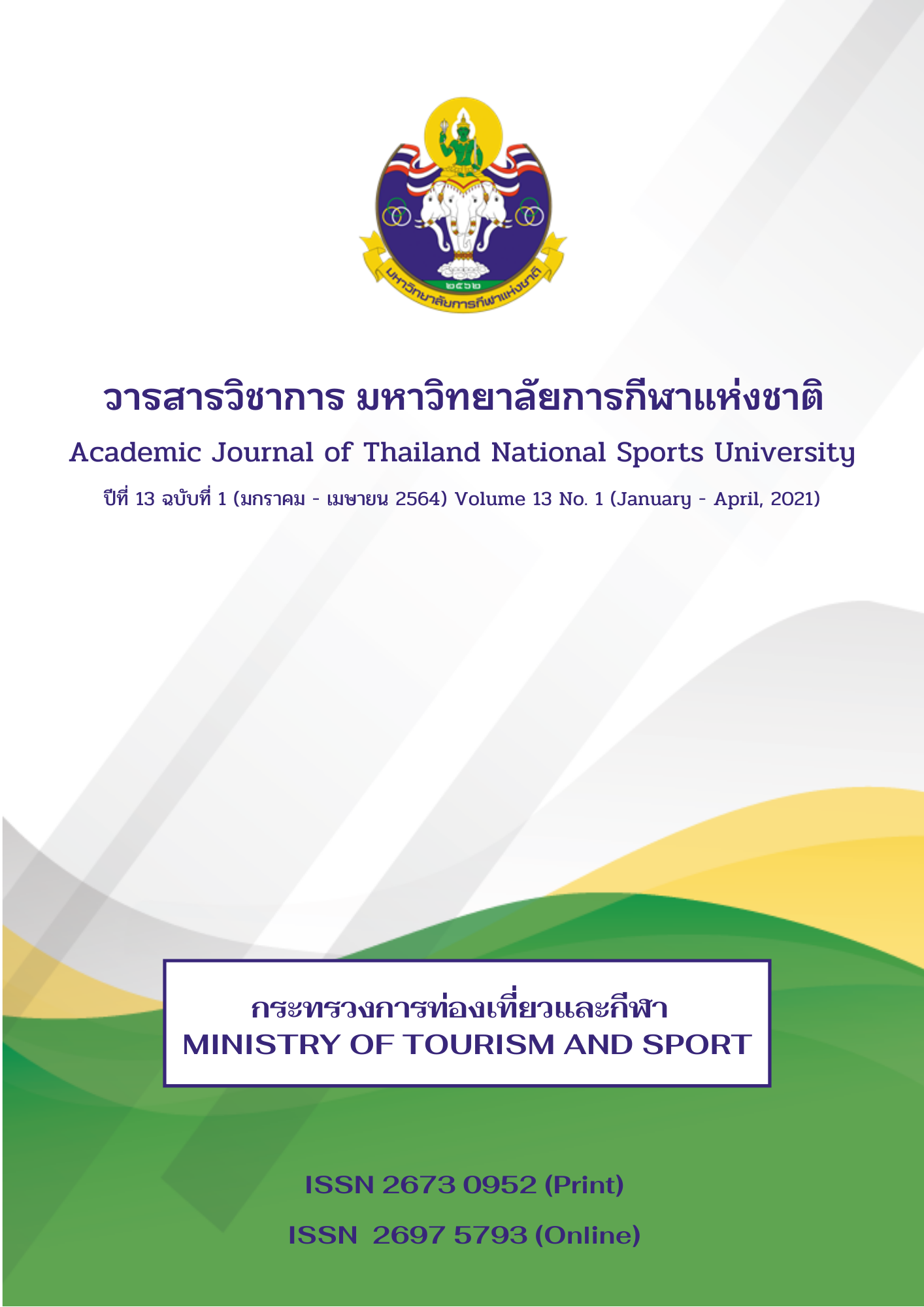THE DEVELOPMENT OF SELF-REGULATION ASSESSMENT IN PLAYING GOLF OF THE 12-15 YEAR OLD YOUTH GOLFER
Main Article Content
Abstract
The objectives of this research were: 1. to develop a self-regulation assessment in playing golf, of the 12-15 year old youth golfer, 2. to study the self-regulatory factors affecting the ability in playing golf of the 12-15 year old youth golfer. The populations were 120 youth golfer whose age were between 12-15 years old, who were the members of the Golf Association of Thailand under the Royal Patronage. The research instrument was a self-regulation assessment questionnaire for playing golf, created by the researcher. The questionnaire was a 5 scale rating and comprised 50 items. The data were analyzed by mean, standard deviation, and the confirmatory factor analysis Pearson's correlation coefficient and stepwise multiple regression analysis.
The findings revealed that;
- The youth golfers had self-regulation assessment at a moderate level, both in overall and individual aspect. It was found that the self-directed behaviors observation was highest rated followed by observation, and practice planning, respectively.
- The created self-regulation assessment for youth golfer possessed the total reliability of .96, while the reliability in each aspect, the practice planning, observation and behavior were .89, .92 and .94 respectively. The power of the discrimination was between .21 and .82.
- The self-regulatory component model for the youth golfer was consistent with the empirical data where
2= 1134.252, df = 1069, p = .081,
2/ df = 1.061, RMSEA = .023, NFI = .961, NNFI = .990, CFI = .991, RMR = .048, SRMR = .048, GFI = .924, AGFI = .907. The weight of factors on planning, rehearsal observation and continual behavior were .993, .974 and .950, respectively. The component weight of the indicator in each factor was between .21 - .86, all values were statistically significant at the level of .01
- The overall self-regulation in practice planning, observation and continual behavior was positively correlated with the ability of the youth golfer with statistical significance at the .01 level with the correlation coefficient equal to .348, .324, .322 and .352 respectively.
5. The results of stepwise analysis showed that factors those affect the ability of the youth golfer were continual behavior (B = 8.25, = 0.35) which was able to predict the sports ability at 12 percent (R2 = 0.12)
Article Details
The published article is a copyright of the Academic Journal of Thailand National Sports University. The passage appeared in each article in this academic journal is a perspective of each author which is not related to the journal. Each author is required to be responsible for all components of his/her own article. If there are any mistakes, each author must be responsible for those mistakes on his/her own.
References
Chanadda Prommee. (2007). Effect of self –regulation program on discipline in sport training of team sport athletes age 12-15 years old at Suphan Buri Sport School. Bangkok: Kasetsart University.
Chicago Board of Education [CBE]. (2000). Introduction to Score Rubrics. Retrieved from http//intranet.cps.k12.il.us/Assessment/Ideas_and_Rubrics/Intro_Scoring/Intro_scoring.html
Cronbach, L. J. (1990). Essentials of Psychological Testing (5thed). New York: HarperCollins.
Kline, R. B. (2010). Principles and practice of structural equation modeling (3rd ed.). New York: Guilford Press.
Siamsport Timeout. (2018). Tiger Woods says 'it's so cool' to watch son Charlie play, enjoy golf. Retrieved from http://www.espn.com/golf/story/_/id/30539758/tiger-woods-says-cool-watch-son-charlie-play-enjoy-golf
Sompoch Iamsuphasit. (2007). Theories and techniques in behavior modification (2nd ed.). Bangkok: Chulalongkorn Press.
Supamas Angsuchot (2011). The statistic for social science and behavioral science: The technique of LISREL. Bangkok: Multimedia.
Zimmerman B. J. (1989). A social cognitive view of self-regulated academic learning. Journal of Educational Psychology, 81(3), 329-339.


